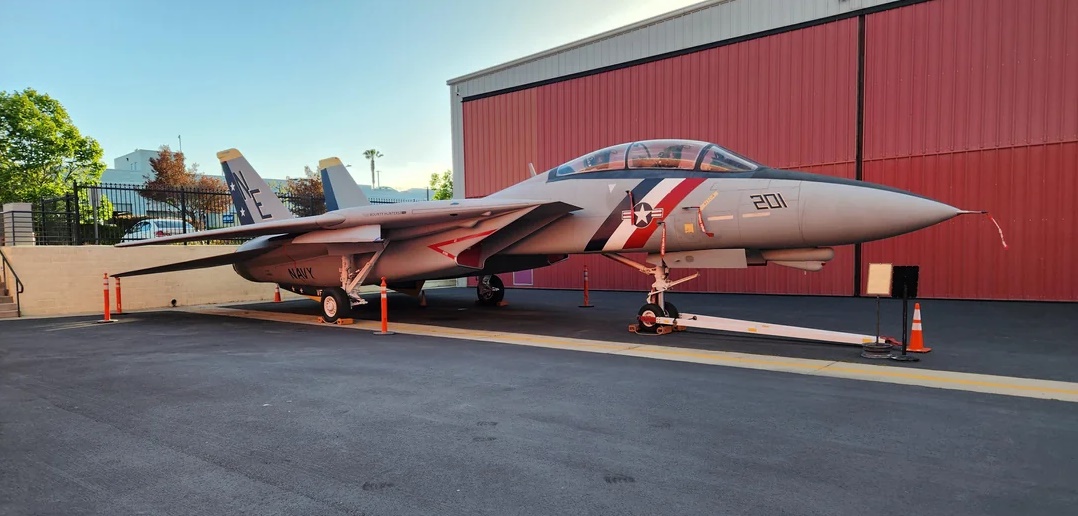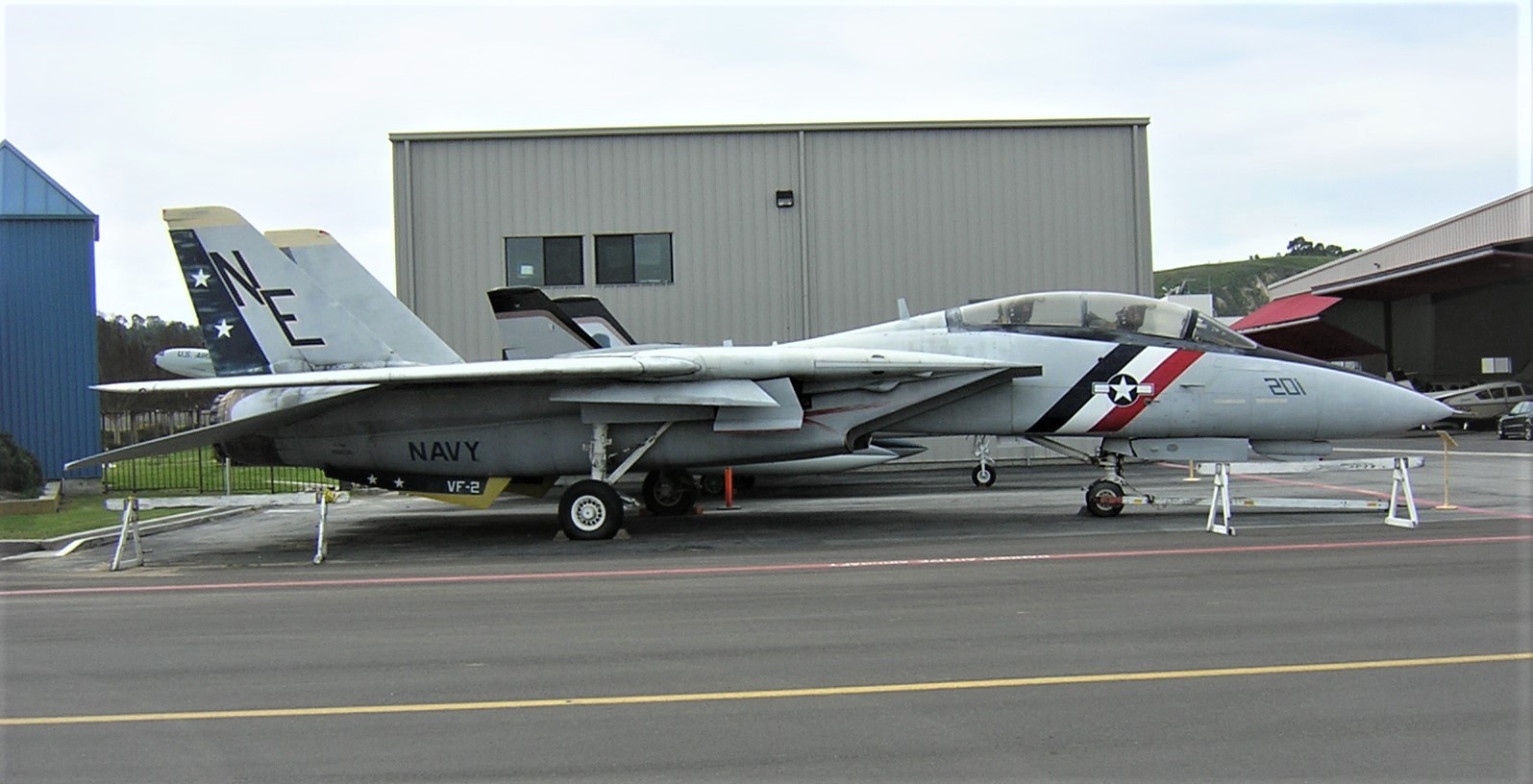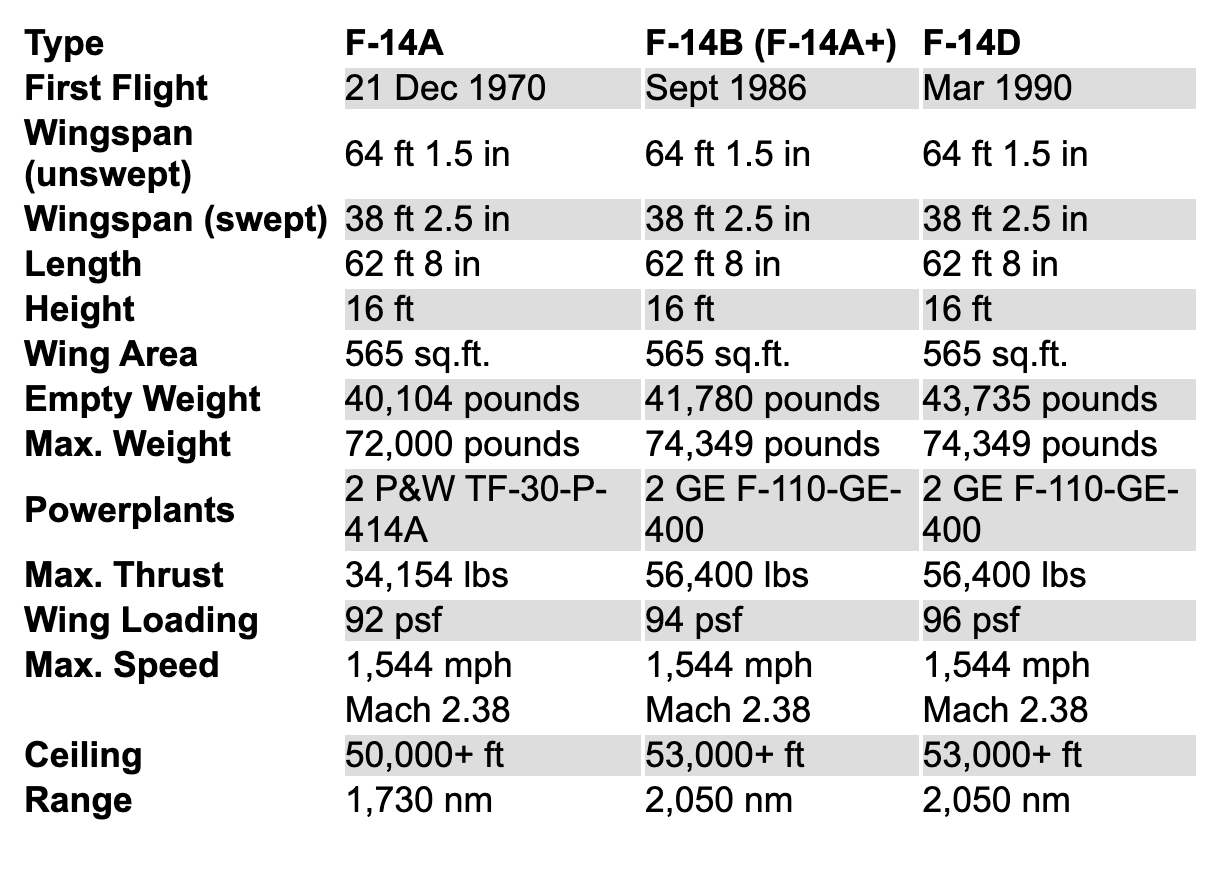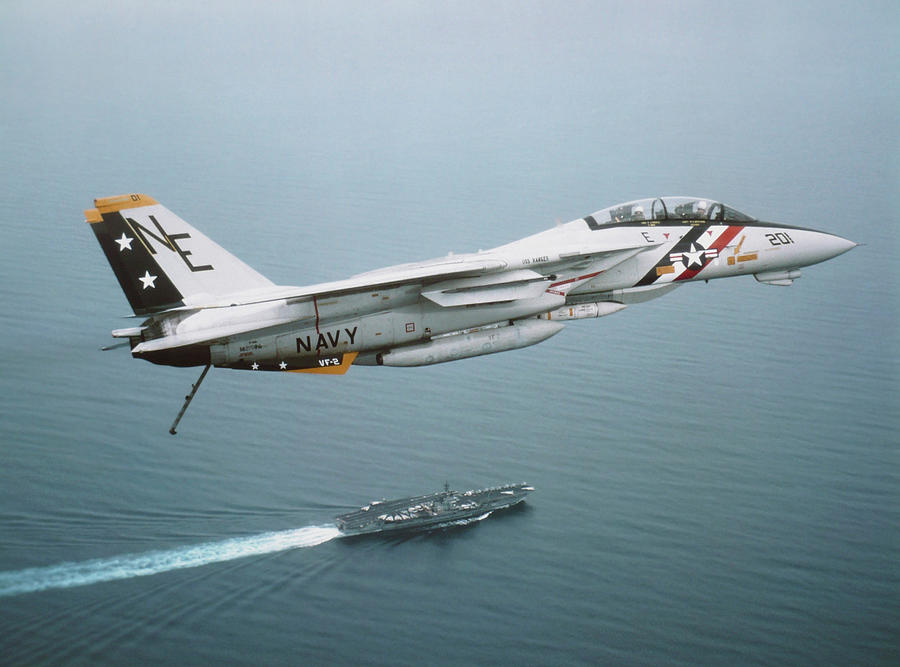The F-14A is a twin seat, twin engined interceptor, capable of air-to-air, air-to-ground and reconnaisance roles. A Mach Sweep Programmer selects the optimum wing sweep angle based on speed and altitude. The aircraft has twin vertical tails with rudders and all-flying horizontal tails. The large rectangular inlets utilize variable multiple shock ramps for good supersonic performance. The crew consists of two, seated in a tandem arrangement on Martin Baker GRU/7A zero-zero ejection seats, with the pilot in front and RIO (Radar Intercept Officer) in back (leading to the RIO’s unofficial nickname – GIB (Guy In Back).
Two Pratt & Whitney TF30 engines, each rated at 20,900lb thrust (in afterburner). Primary weapon system is the AWG-9, which controls the radar, calculates intercepts, sets priorities and monitors other subsystems. Physical firing of missiles is done by the AWG-15 computer. Weapons carried include the AIM-9 Sidewinder, AIM-7 Sparrow, AIM-54 Phoenix, M61A1 20mm vulcan cannon, Mk80 series bombs, training bombs, Mk20 cluster bombs, sea mines and Laser Guided Bombs (LGB’s).


F-14A Tomcat Specifications
| Length | 62ft 8in 19.10m |
| Height | 16ft 0in 4.88m |
| Wingspan | 64ft 1.5in 19.54m (unswept) 38ft 2.5in 11.65m (swept) 33ft 3.5in 10.15m (overswept) |
| Weights | 40,104lb 18191kg (empty) 58,715lb 26632kg (clean take off) 70,764lb 32098kg (max take off) 74,349lb 33724kg (max weight) |
| Powerplant | 2 Pratt & Whitney TF30-P-414A turbofan engines, each rated at 20,900lb thrust (in afterburner) |
| Fuel | 16,200lb 7348kg (internal) 3,800lb 1724kg (external) |
| Range | 2,000m 3220km (max range) 765m 1231km (combat air patrol range) |
Specifications of the different F-14 variants that were produced between 1969 and 1992. Grumman produced some 710 F-14’s with the last one being an F-14D on 20 July 1992. One F-14 variant is not specified below, the original F-14B with Pratt & Whitney 401 engines.


